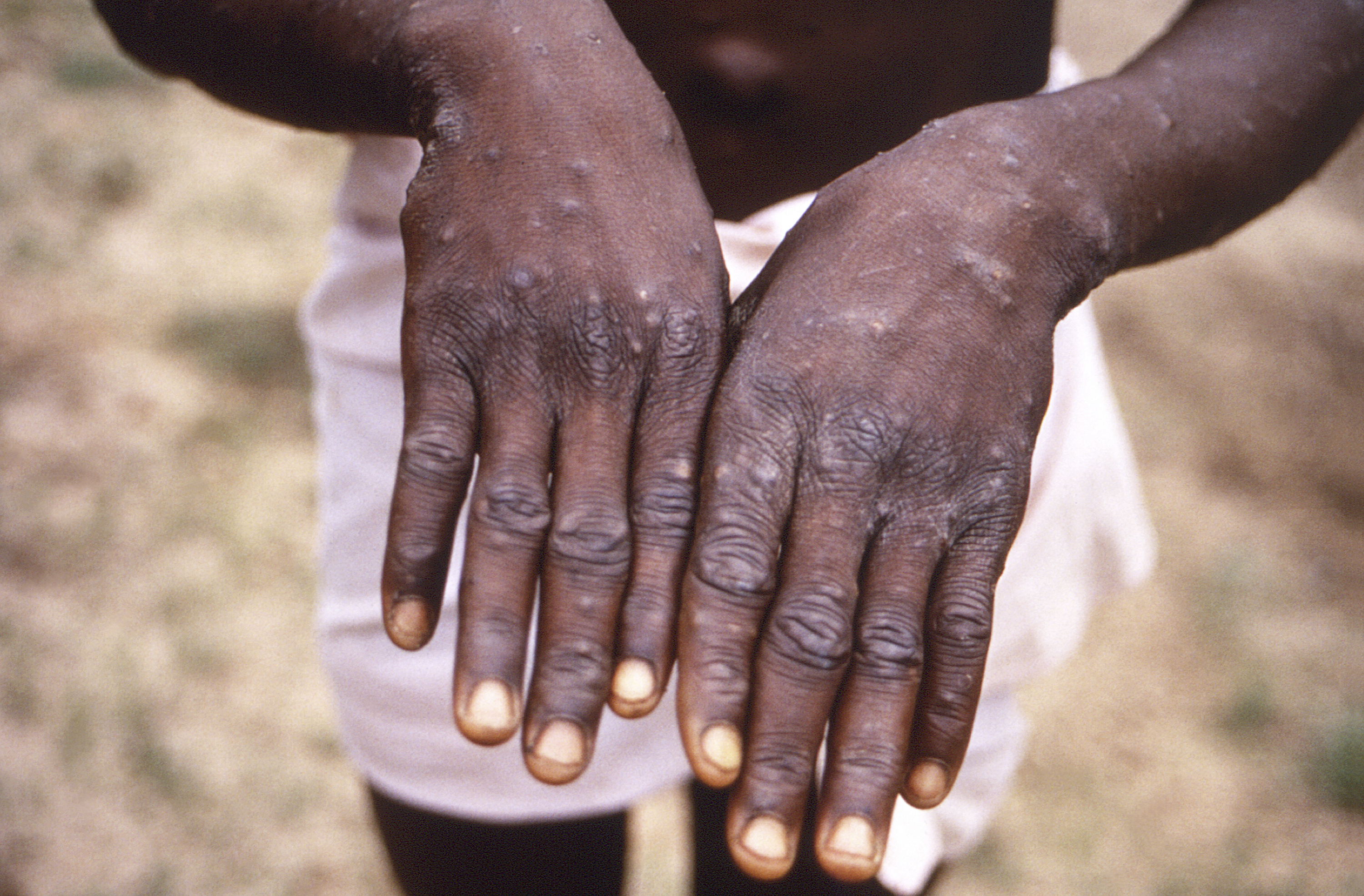More Stories
The monkeypox virus is a rare disease that is part of the same family of viruses as variola virus, the virus that causes smallpox, according to the Centers for Disease Control and Prevention. It is not related to chickenpox.
Below are some key things to know about the virus:
HOW IT SPREADS
The CDC says monkeypox spreads by:
Close, personal, often skin-to-skin contact, including direct contact with monkeypox rash, scabs or body fluids from a person with monkeypox.
Touching objects, fabrics (clothing, bedding or towels) and surfaces that have been used by someone with monkeypox.
Contact with respiratory secretions.
This direct contact can happen during intimate contact, including during sex, hugging, kissing and prolonged face-to-face contact.
A pregnant person can spread the virus to their fetus through the placenta.
It’s also possible for people to get monkeypox from infected animals, either by being scratched or bitten by the animal or by preparing or eating meat or using products from an infected animal.
A person with monkeypox can spread it to others from the time symptoms start until the rash has fully healed and a fresh layer of skin has formed. The illness typically lasts two to four weeks.
The CDC says scientists are still researching if the virus can be spread when someone has no symptoms.
SIGNS AND SYMPTOMS
Monkeypox symptoms are similar to smallpox symptoms, but milder, and monkeypox is rarely fatal, according to the CDC.
The virus may cause fever, body aches, chills, fatigue, swollen lymph nodes, exhaustion, headache, respiratory symptoms and pimple-like bumps on many parts of the body.
The rash will go through several states, including scabs, before healing. The pimples or blisters may be painful or itchy.
Symptoms can appear from five to 21 days after infection. A typical incubation period (time between infection and symptoms) is six to 13 days. Severe cases can lead to complications and even loss of vision.

PREVENTION
The CDC lists various steps to prevent infection, including:
Getting vaccinated;
Avoiding close, skin-to-skin contact with people who have a rash that looks like monkeypox;
Avoiding contact with objects and materials that a person with monkeypox has used;
Wash your hands often with soap and water or use an alcohol-based hand sanitizer, especially before eating or touching your face and after you use the bathroom.
VACCINE
If you suspect that you may have been infected or are at high risk of infection, the CDC recommends seeing a doctor about getting the vaccine or looking out for vaccine clinics in your area.
The preferred vaccine to protect against monkeypox is JYNNEOS, which is a two-dose vaccine. It takes 14 days after getting the second dose of JYNNEOS for maximum immune protection.
The Department of Health and Human Services has "distributed nearly 200,000 JYNNEOS vaccines in recent weeks, accelerated the inspection of approximately 800,000 vaccines for delivery this summer while procuring millions more for delivery in mid-2023, and ensured that tens of thousands of tests per week would be available to physicians and patients."
WHERE TO GET A VACCINE
Below are links to find a vaccine clinic or schedule an appointment for the vaccine in your area:
CONNECTICUT
Vaccination for qualified individuals will be by appointment only at one of the community partner locations listed here.
Click here for more information from the state Health Department.
NEW JERSEY
Contact your local health department to coordinate vaccination or click HERE to find clinics in your area. Vaccinations are by appointment only.
Click here for more information from the state Health Department.
NEW YORK
Click here for more information from the state Health Department.
More from News 12
0:22

Crews battle Wakefield apartment fire
0:35

Car hits scaffolding head-on in Mount Hope
1:42

Cold and windy tonight in The Bronx; Wintry mix in the week ahead
1:27

2 injured in Baychester catering hall partial ceiling collapse
1:31

Mayor-elect Mamdani endorses Diana Moreno to fill his Assembly seat
